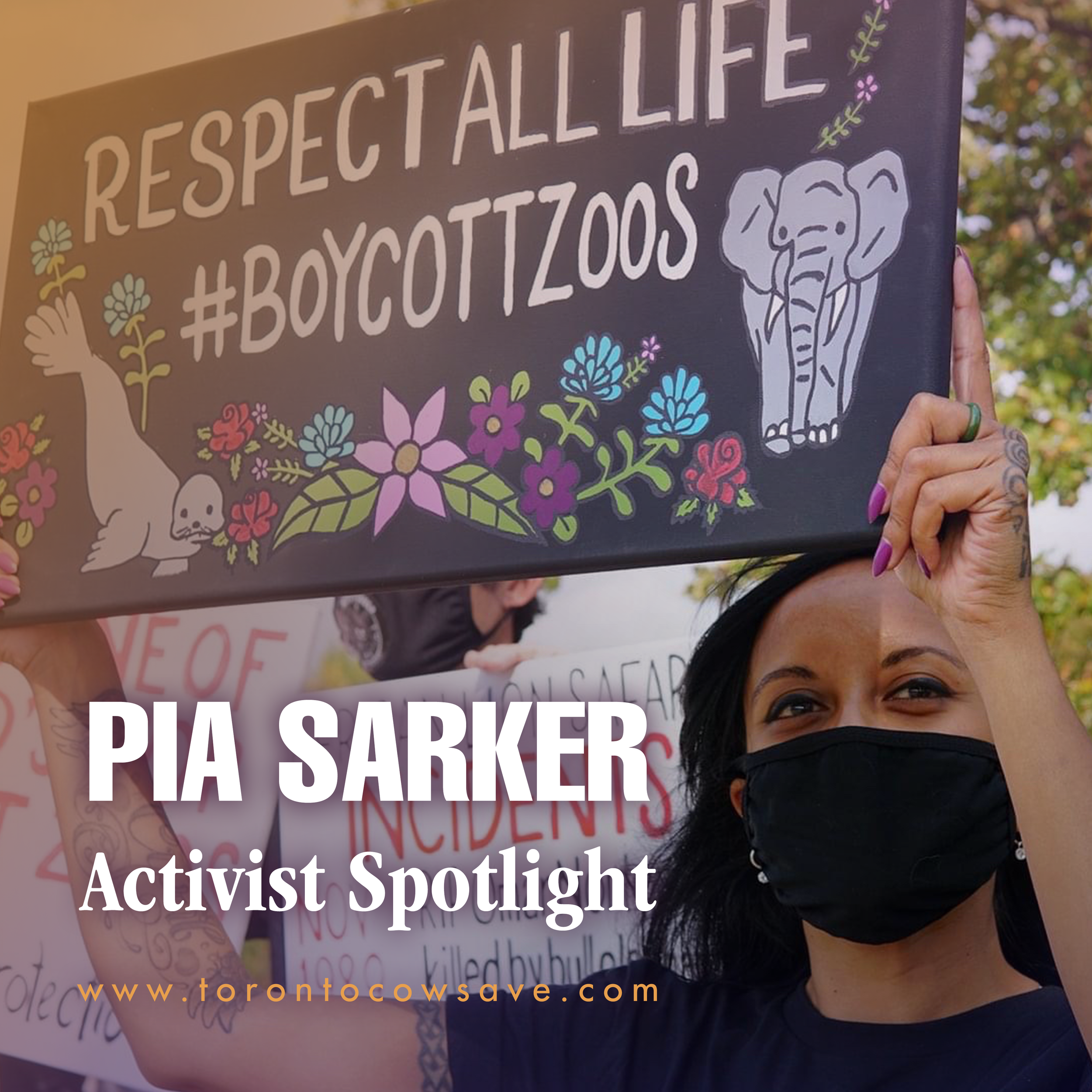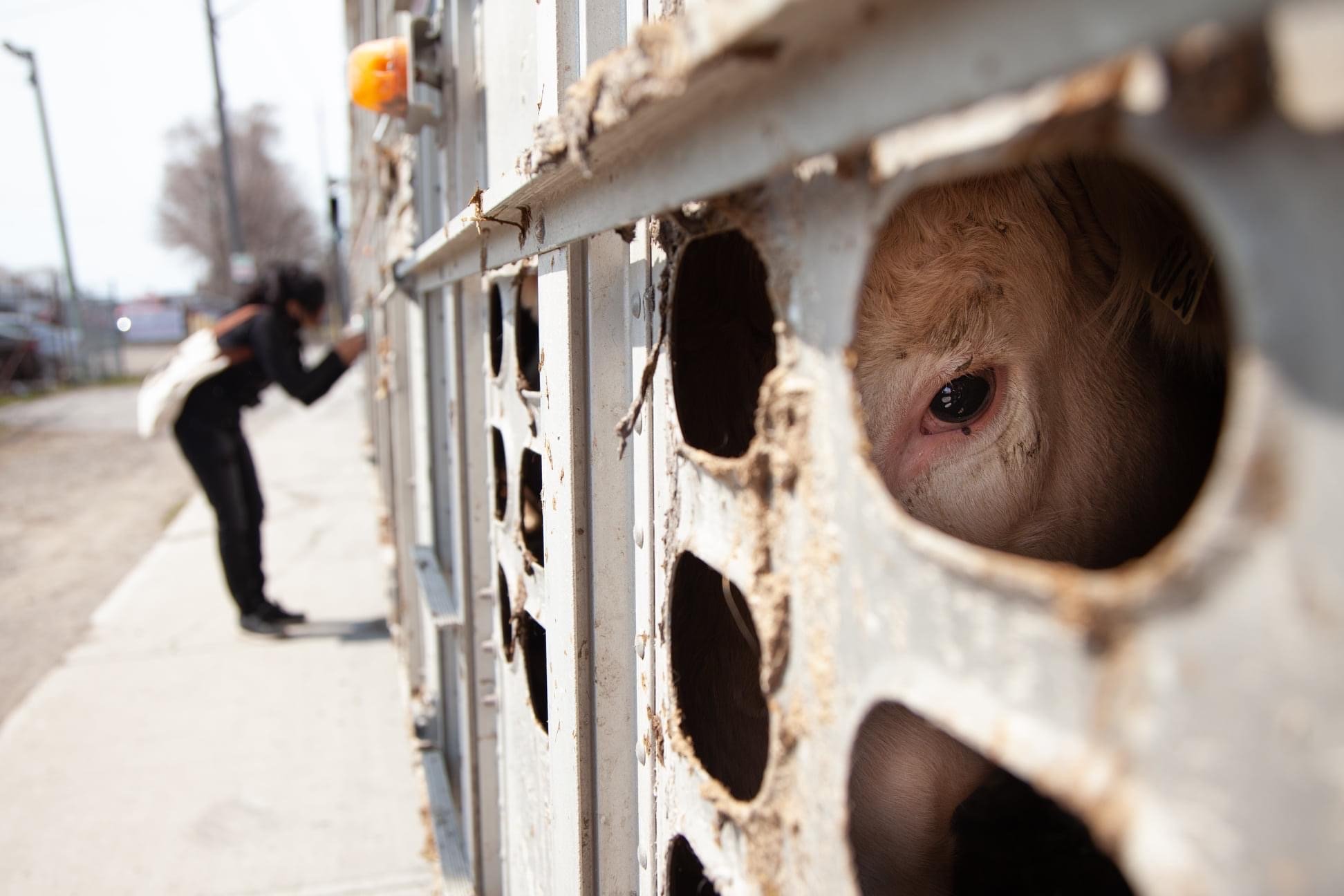Spotlight: Pia Sarker
I was brought up in a Muslim Bengali home, born in Barrie, Ontario in Canada, raised consuming chicken, beef, and fish, milk and eggs. When I was 10 years old I visited Bangladesh with my family where it was normal for me to witness the slaughter of a chicken and a cow. I believed that we needed to eat those animals to live and therefore accepted what happened in front of me as a sad necessity. At 17, I thought of myself as an animal lover and adopted a cat who was the runt of the litter born in a barn. Eventually, I became involved in feline rescue and volunteered with various rescue organizations. In 2011 I adopted a cat with special needs (Cerebellar Hypoplasia) and opened up my home to several others with the same condition over the years. I learned how to safely trap feral cats and have rescued over 25 since 2020 without having to return any of them back to the harsh outdoor life in Toronto. Three of them live happily together permanently at my rescue and sanctuary called New Cat City. The space is also shared with a turtle and rabbit, both rescued from abandonment.
A large portion of my employment background involved working in various veterinary practices in Toronto as a vet assistant as well as working at the front desk (at both regular and emergency hospitals) with the goal of helping animals in need of assistance by human intervention. I wanted to be a part of the process to ease an animal’s pain and suffering or help to save their life. It was while I was working in that capacity in early 2016 that I realized my own internal conflict and ethical hypocrisy of helping certain animals while actively contributing to the suffering of others. I had recognized that I was socially conditioned into accepting the violence and abuse that occurs routinely to animals used for food, fashion, entertainment, experiments/lab testing, sports, military/police, work, cultural traditions, etc. I realized that exploitation is everywhere once you become conscious of it, and it’s all completely normalized in our society.
Along my journey of becoming vegan myself I was lead down a path to become a vegan activist. Exposing myself to the terrors the animals endure by learning about various industries was and is emotionally challenging and invokes feelings of despondence. It’s always been important for me to learn about the harsh realities of what the animals endure so I may help try to inform and educate those who are contributing to it, in an effort for them to think about their choices. I watched some very difficult-to-watch documentaries like Earthlings and Dominion. Trying to inspire change was the logical solution for me. In September 2016, I went to my first Marineland demonstration and progressively participated in other events such as protests, marches, and demonstrations for different animal causes, as well as sharing information online as forms of activism for animal justice.
Pia’s creative hand-made placards for the Marineland demonstration.
In June of 2020 when we were in the midst of the Covid-19 pandemic, I clearly recall reading a Facebook status that an activist was killed outside of the pig slaughterhouse in Burlington. Until then, I had never attended any events held outside of local slaughterhouses despite knowing about them. I justified not going because I was already vegan. Why come out of my comfort zone and expose myself to witness suffering? Why put myself in an emotionally vulnerable position by choice? When the news was released that Regan Russell was run over by a truck delivering pigs, I became tragically inspired to learn more about her, and the more I read, the more I became interested to bear witness to the animals used to food. The week following the tragedy I attended my first Toronto Cow Save vigil for cows in honour of Regan Russell and learned for myself why it is important for those who are vegan to attend these events.
Pia bears witness during a Toronto Cow Save vigil.
Looking into a trailer filled with frightened and confused young animals is not an experience you can understand from watching the videos which are shared from there. It is a complete sensory assault. You are left feeling utterly helpless for the animals in front of your eyes. You see them as individuals, and sometimes you can connect with them. Whether we want to see it or not, it’s happening every day all over the world. Looking away from their suffering is detrimental for the vegan movement, because it may cause us to become comfortable with commodification of these beings. Just being vegan alone is complacency in accepting that you don’t care if the suffering continues, as long as you’re not a contributor to the suffering.
Pia holding a rescued hen.
I began attending cow, pig, and chicken slaughterhouse vigils regularly and met many new like-minded friends. In the late fall, the trailers carrying chickens are covered by a tarp to protect the chickens from the winter elements. In spring of 2021 I learned that the chicken vigils were not resuming until there was someone to take over the lead on organizing them, so I volunteered to organize Toronto Chicken Save events. It’s been a privilege to help people see the truth about animal agriculture. We can’t make change by forcing views onto people, but we can inspire change by letting people decide for themselves when they see the individuals inside of the trucks.






